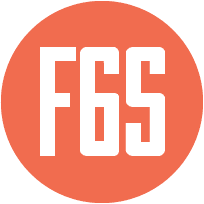Hellsword: Expanded Design & Technical Prompt (Integrated with ConcreteCMS v9)
1. Context & Vision
Hellsword is a dark fantasy hybrid game that seamlessly blends a collectible card game (CCG) with a voxel-based sandbox, set in a grimdark universe where magic and technology clash in a fractured, decaying realm. Players engage in strategic deck-building, real-time guild warfare, and immersive sandbox exploration, crafting their own commander cards and battling across voxel worlds they can shape and defend. The game emphasizes player agency through personalized commanders, a circular faction system, and dynamic interactions between card battles and sandbox environments. Integrated into a ConcreteCMS v9 website, Hellsword leverages the CMS for user authentication, content management, and community features, creating a unified platform that enhances both gameplay and social engagement.
Core Vision Elements:
-
Strategic Deck-Building: Players construct decks (up to 15 cards, unlimited copies, multiple decks supported) for tactical battles influenced by a rock-paper-scissors faction system.
-
Commander Cards: Craftable, customizable cards reflecting the player’s likeness, enhanced with mission-earned commands for unique tactical depth.
-
Voxel Sandbox Worlds: Players explore, build, and spawn events in procedurally generated voxel realms, inviting others to collaborate or compete.
-
Guild-Driven Conquest: Guilds vie for territorial control, blending card battles with sandbox development for large-scale warfare.
-
Notification & Social Ecosystem: A robust, customizable notification system (in-game, email, SMS, social sharing) paired with real-time social features fosters community and engagement.
2. ConcreteCMS v9 Integration
2.1. Core CMS Benefits
-
User Management:
-
Leverage ConcreteCMS’s built-in systems for user registration, login, and role-based permissions (e.g., player, guild leader, admin).
-
Extend user profiles with game-specific data (deck lists, commander details, voxel world ownership).
-
-
Custom Blocks & Packages:
-
Blocks: Create interactive UI components for deck management, guild dashboards, event notifications, and voxel world previews.
-
Packages: Develop modular packages for game logic (e.g., card crafting, faction multipliers, event spawning) and data handling (e.g., voxel chunk storage, player inventories).
-
-
Content & Community:
-
Manage static content (lore pages, FAQs, patch notes) and dynamic community features (forums, leaderboards) within the CMS.
-
Integrate social sharing buttons (e.g., Twitter, Discord) for achievements and event invites.
-
2.2. Data & API Integration
-
Database Utilization:
-
Store player profiles, card definitions, deck configurations (up to 15 cards), guild hierarchies, voxel world metadata, and notification preferences in ConcreteCMS’s MySQL or PostgreSQL database.
-
Use custom entities for complex data structures (e.g., voxel chunks linked to player-owned tiles).
-
-
API Development:
-
RESTful Endpoints: Expose endpoints for real-time interactions (e.g., /api/decks/update, /api/events/spawn, /api/notifications/settings).
-
GraphQL (Optional): Enable flexible querying for nested data (e.g., retrieving a player’s deck and commander stats in one call).
-
Ensure APIs support ConcreteCMS’s authentication tokens for secure access.
-
3. Game Overview
3.1. Genre & Core Concept
-
Dark Fantasy CCG + Voxel Sandbox: A tactical card game where players build decks and engage in battles, paired with a voxel sandbox for exploration, construction, and event hosting, all set in a grimdark aesthetic inspired by Warhammer 40k and Dark Souls.
3.2. New Mechanics
-
Deck Building: Up to 15 cards per deck, with unlimited copies and support for multiple decks tailored to PvP, guild wars, or event challenges.
-
Commander Cards: Unique, craftable cards personalized with voxel-crafted visuals and enhanced by mission-earned commands (e.g., buffs, special abilities).
-
Faction Circle Logic: A circular system (e.g., Necrotech > Abyssal > Draconic > Eldritch > Necrotech) where factions have strategic strengths and weaknesses, implemented via damage multipliers.
-
Voxel Sandbox Integration: Resources gathered in voxel worlds can be converted into cards, and cards can be deployed as structures or units in the sandbox.
-
Player-Spawned Events: Players initiate events (public or invite-only) in their voxel worlds, summoning monsters for cooperative or competitive play.
3.3. Key Features
-
2D Management Interface: A sleek, illustrated dashboard for deck-building, resource tracking, commander customization, and guild coordination.
-
3D Voxel Sandbox: Procedurally generated realms where players gather resources, build defenses, and host events.
-
Guild Territorial Conquest: Guilds compete for voxel tiles, using card battles and sandbox strategies to claim and fortify territory.
-
Notification System: Comprehensive alerts (in-game, email, SMS, social media) with granular control over types, delivery methods, and frequency.
4. Game Mechanics
4.1. Deck Building & Card System
-
Deck Structure:
-
Limit: 15 cards per deck, no cap on duplicate cards.
-
Multiple Decks: Players can maintain several decks, switching between them for different contexts (e.g., PvP, guild defense, event farming).
-
Synergy Mechanics: Bonuses for faction-aligned decks or specific card combos (e.g., pairing a Necrotech unit with a structure unlocks a regeneration effect).
-
-
Card Types:
-
Unit Cards: Summonable entities (e.g., undead soldiers, draconic wyrms) with attack, health, and abilities (e.g., poison, flight).
-
Spell Cards: One-time effects (e.g., fireball, heal, faction-specific curses).
-
Structure Cards: Deployable assets (e.g., turrets, walls) usable in battles or voxel worlds.
-
Resource Cards: Generate mana or materials to play other cards.
-
Commander Cards: Player-crafted cards with customizable stats, visuals, and mission-earned commands.
-
-
Faction Circle Logic:
-
Factions: Necrotech (cyber-undead), Abyssal (demonic chaos), Draconic (fire dragons), Eldritch (cosmic horrors).
-
Multipliers: 1.5x damage against "strong" faction, 0.75x against "weak" faction.
-
Mixed Decks: Gain versatility but may lose faction-specific bonuses.
-
4.2. Commander Cards
-
Customization:
-
Visuals: Use voxel resources to craft appearances (e.g., armor, faction-themed skins).
-
Stats: Allocate points to health, mana, or ability strength.
-
Abilities: Equip commands from a pool (e.g., "Summon Minions," "Faction Rally") earned via missions.
-
-
Progression:
-
Level up through combat or missions, unlocking new slots for commands or stat boosts.
-
Prestige system for veteran commanders with cosmetic rewards.
-
4.3. Voxel Sandbox Integration
-
World Generation:
-
Procedurally generated biomes (e.g., corrupted forests, volcanic plains) with expandable borders via missions or conquest.
-
-
Resource Gathering & Crafting:
-
Resources: Mine metals, crystals, or corrupted wood; harvest from defeated mobs.
-
Crafting: Use stations (e.g., forges, altars) to create items, cards, or commander upgrades.
-
-
Building Mechanics:
-
Voxel Tools: Place individual blocks or use blueprints for complex structures (e.g., guild halls, traps).
-
Conversion: Transform voxel items into cards (e.g., a steel wall becomes a structure card) via Converter Stations, with cooldowns to prevent abuse.
-
-
Event Spawning:
-
Types: Small skirmishes (e.g., "Ghoul Infestation") to epic battles (e.g., "Abyssal Titan").
-
Mechanics: Consume resources at a Summoning Altar to spawn events, set as public or invite-only.
-
4.4. Guild & Territorial Conquest
-
Tile Control:
-
Guilds siege voxel tiles, resolving conflicts via card battles or sandbox sabotage (e.g., destroying defenses).
-
Controlled tiles generate resources and can be fortified with structures.
-
-
Guild Features:
-
Hierarchy: Leaders, officers, members with role-based permissions.
-
Treasury: Shared resources for guild projects (e.g., crafting stations).
-
Diplomacy: Alliances or trade pacts with other guilds.
-
4.5. Event & Notification System
-
Player-Spawned Events:
-
Setup: Players configure event difficulty, monster type, and invite settings.
-
Participation: Real-time multiplayer sessions where allies join to defeat spawned threats.
-
-
Notification Features:
-
Types: Battle invites, event starts, guild updates, resource thresholds.
-
Delivery: In-game pop-ups, email (via SendGrid), SMS (via Twilio), social media posts.
-
Control: Settings page to toggle notification types, set quiet hours, and select channels.
-
5. Technical Architecture
5.1. Frontend Technologies
-
2D Interface:
-
Framework: Vue.js 3 with Pinia for reactive state management.
-
Styling: Tailwind CSS with Vuetify for dark-themed components.
-
Build Tool: Vite for fast iteration.
-
-
3D Voxel Sandbox:
-
Rendering: Three.js with chunk-based loading for performance.
-
Physics: Cannon.js for terrain interactions (e.g., collapsing structures).
-
-
Real-Time Communication:
-
Socket.IO: Handles chat, battle sync, and event updates, integrated with ConcreteCMS assets.
-
5.2. Backend & Server Frameworks
-
ConcreteCMS v9 Core:
-
Authentication: Use CMS login for seamless player access.
-
Packages: Custom logic for deck management, voxel persistence, and guild operations.
-
-
Database:
-
Schema: Tables for players, cards, decks (15-card limit), voxel chunks, guilds, events.
-
Optimization: Redis caching for live data (e.g., event status, player sessions).
-
-
API Services:
-
RESTful: Endpoints for card operations, event triggers, and notification prefs.
-
Microservices (Optional): Node.js for high-concurrency real-time features.
-
5.3. Notification Integrations
-
External Services: SendGrid for email, Twilio for SMS, OAuth for social media.
-
Real-Time: Socket.IO pushes in-game alerts instantly.
6. Detailed System Breakdown
6.1. Card & Deck Data Models
-
Card Model: {id, name, faction, type, attack, health, mana_cost, abilities, commander_data}
-
Deck Model: {user_id, deck_id, card_ids (array, max 15)}
-
Commander Model: {player_id, visual_data, stats, equipped_commands}
6.2. Battle & Game Flow
-
Initialization: Select a deck, match with opponent (AI, PvP, guild).
-
Turn Phases: Draw → Resource Gain → Play Cards → Combat (faction multipliers applied) → End.
-
Rewards: XP, resources, or rare cards based on victory margin.
6.3. Voxel Sandbox & Event Mechanics
-
Storage: Chunks stored as serialized data in ConcreteCMS database.
-
Events: {event_id, type, difficulty, invite_list, start_time, status} with real-time synchronization.
6.4. Social & Notification System
-
Chat: Real-time guild/global channels via Socket.IO.
-
Notifications: API-driven settings (/api/notifications/update) for user preferences.
7. Performance, Scalability, & Security
-
Scalability: NGINX load balancing, database sharding for high player counts.
-
Performance: Lazy-loaded voxel chunks, Redis caching for frequent queries.
-
Security: ConcreteCMS CSRF protection, server-side validation for all actions, HTTPS for data transfer.
8. Development Roadmap
-
Foundation: Set up ConcreteCMS v9, user auth, and basic site structure.
-
Card Game Core: Build deck system (15-card limit), commander crafting, faction logic.
-
Voxel Sandbox: Integrate Three.js, add resource gathering and event spawning.
-
Guild & Battles: Implement territorial conquest, real-time battle flow.
-
Social & Notifications: Add chat, granular alerts, external integrations.
-
Launch Prep: Optimize performance, test security, release with ongoing updates.
9. Conclusion & Next Steps
This prompt outlines a robust framework for Hellsword, blending tactical card gameplay with voxel sandbox creativity, all powered by ConcreteCMS v9. To proceed, use this as a foundation for:
-
A detailed design document expanding on mechanics (e.g., commander crafting workflows).
-
A technical blueprint defining API endpoints and database schemas.
-
Iterative prototyping, starting with core deck-building and voxel rendering.
Additional Considerations:
-
Define specific event reward structures and faction lore in follow-up docs.
-
Prototype real-time features early to ensure scalability.
-
Plan expansions (new factions, seasonal events) for long-term engagement.

